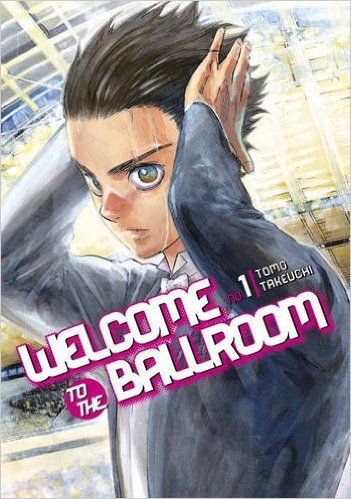Full-Time Wife Escapist Volume 1 and 2 by Tsunami Umino
Kodansha seems to be putting out so many digital titles, I’m having a hard time keeping track of them all. I’m always curious to check out josei titles and Full-Time Wife Escapist is a unique title, as it isn’t as overtly focused on romance as some of the other josei titles that have been translated over here.
Mikuri is in a bind after attending graduate school in psychology. She’s having difficulty finding a full-time job, and makes ends meet as a temp. When her temp job ends, she’s caught in a difficult situation because her parents are moving to the country, where there will be even less work for her. She picks up some shifts here and there doing housework and meets a man named Tsuzaki, and she becomes his regular part-time housekeeper. They become closer when she takes care of him during an illness. Mikuri and Tsuzaki come up with the solution where Mikuri will move in as his platonic paid wife, taking over housekeeping duties, making him lunch and dinner, and generally making his bachelor apartment more comfortable.
Tsuzaki is a bit of a loner at work, and somewhat emotionally stunted and has a way of relating to other people that make them assume that he’s cranky, but it seems more like he just hasn’t developed his social skills very well. The transnational nature of the relationship is one of the aspects of this manga that makes it both interesting and refreshing. When Mikuri and Tsuzaki go to visit his parents, they set the terms of Mikuri’s overtime by negotiating back and forth. It is interesting to see tasks that would be unacknowledged emotional labor in a real relationship being assigned a dollar value in this one.
Mikuri’s background in psychology shows her observing other people as opposed to getting real insight on herself. She does have some amusing daydream sequences when her mind wanders and she projects herself into some dream tv interviews that offer some commentary on her life choices. Her aunt Yuri, an unmarried career woman, serves as a counterpoint to Mikuri’s more aimless lifestyle. I enjoy manga when it gets a little didatic, and there are some great asides in Full-Time Wife Escapist where the characters start discussing the economic conditions facing younger adults in Japan, providing some real world background and context to Mikuri’s unconventional lifestyle choice.
The first volume sets up the unique relationship situation in The Full-Time Wife Escapist fairly quickly, and the second volume shows some of the issues that happen when the couple continues to try to portray their relationship as real to friends and colleagues, who sense that something is a bit off in the way the couple relate to each other. At the same time, the close proximity of the fake couple is showing some awareness developing between them. This series has a nice slice-of life pace to the storytelling, as everyday activities like preparing dinner have a new slant due to the unique relationship. At the same time, there are some moments of pathos, as Tsuzaki reflects that if Mikuri ever decides to get married for real, he’s going to be alone for the rest of his life.
Tsuzaki’s friend Kazami starts appearing a bit more and more, and he and Mikuri have a few easy friendly conversations. Kazami starts envying the married lifestyle, but he’s not interested in settling down at all. Intriguing changes are signaled for the next few volumes. I enjoy a good josei romance series, but one of the things I appreciate about The Full-Time Wife Escapist is that it is focused more on transactions and slowly developing friendships than overt romance. It’ll also be interesting to see if Mikuri’s unconventional wife for hire lifestyle is sustainable over the long term.




